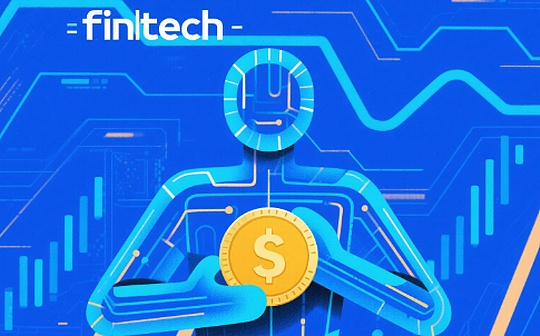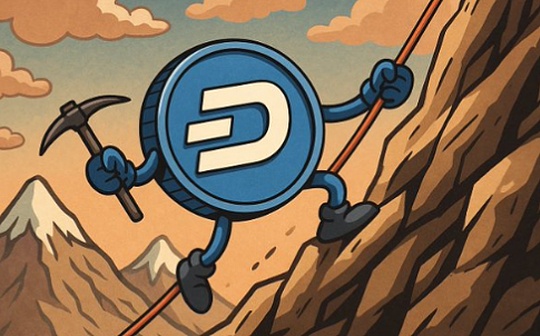
source:Sam Broner, a16z crypto partner; compiled by: AIMan@Bitchain Vision
We’ve pointed out beforeStablecoins will swallow the payment market, many large payment companies around the world have noticed this month.
In the past six weeks alone: USDC issuer Circle has applied for listing on the New York Stock Exchange; Coinbase has entered the field of agency payments and has formulated stablecoin API payment standards; Visa and Mastercard have enhanced support for stablecoins; Stripe has announced the launch of stablecoin financial account balances, programmable stablecoins, stablecoin-backed bank cards, and more.
The main line of all these announcements is to meet the needs of users, and we can consider it as“Skype Moment” in the Payment Field.I mean: In 2003, Skype launched their first killer feature, the ability to make low-priced calls from a computer to a landline.But as more and more people join digital calling networks, they can finally give up on phone calls and use Internet-based WhatsApp calls, which heralds the seamless transition from landlines to mobile operators to Internet-based voice and data connections.
Similarly, connecting stablecoins with traditional systems will help more people interact directly with stablecoins, even if they need to rely on traditional payment companies to build backward compatibility in existing products.As more individuals and businesses use existing products to adopt stablecoins, stablecoins will have more opportunities to apply to new or better blockchain-based products—such as self-hosting, shopping, remittance, using DeFi, and more.
Here is our announcement schedule for the past six weeks, how they fit into the big picture, and why they matter…
May 7 and 8: Stripe announced the launch of a stablecoin financial account, allowing corporate users to hold stablecoin account balances in 101 countries.They also announced the launch of USDB – a programmable stablecoin that allows developers to embed digital dollars into their applications (and reward them for developing on USDB).
Stripe is building adoption incentives directly into the stablecoin layer to increase adoption and have more stacks.By launching a stablecoin financial account, Stripe can skip the slow and expensive agency bank maze, cut payment networks, and compete directly with banking and card networks.The Stablecoin Financial Account enables Stripe to support users in 101 countries, compared with only 46 countries before.USDB may become the default stablecoin for Stripe products, giving them more ways to monetize payments.These releases will enable Stripe to use neutral blockchain tracks instead of card networks to offer cheaper, more customizable, more widely available and more profitable products.
May 7: MoneyGram, the world’s leading offline payment network, announced the launch of MoneyGram Ramps, a programmable stablecoin deposit and withdrawal channel that enables cash deposits and withdrawals in more than 170 countries.
Importance: Stablecoins have found product market fits in emerging markets, and remittance business is the driving force for early adoption of these markets.However, switching between stablecoins and physical cash is surprisingly difficult, and physical cash remains a widely accepted alternative in most markets.MoneyGold has a global cash network, which provides another way to interact with daily purchases and spending.
May 6:Coinbase announces the launch of x402, a new standard for internet native stablecoin payments designed to enable atomic transactions between APIs, applications and AI agents.
Did you know Visa can’t handle payments that are less than a cent?Agent commerce (i.e., autonomous software agents perform transactions on behalf of users) requires programmable currency in order for the agent to purchase and consume for us.
Stripe, Visa and others are exploring their respective agency business layer solutions.Stablecoins are an attractive option because they are built on a trusted, neutral, decentralized platform.Moreover, since the decentralized protocol does not charge withdrawal fees, the long-term fees for stablecoins are likely to be the lowest.The “x402” standard incorporates stablecoin settlement, intent-based payments and compliance into a specification—laying the track that Visa and SWIFT cannot match in terms of speed, composability, or programmability.
May 6:Visa and BVNK announce strategic partnership.Visa’s partnership with BVNK can be interpreted as a bet on a stablecoin “pipeline” – allowing the card network to directly access payment channels that may bypass it.By partnering with BVNK, a stablecoin payment infrastructure company, Visa can hedge the risks posed by Stripe’s growing suite of stablecoin payment products.
Visa is smart in this regard: expect other existing payment companies to follow suit or risk snatching the future from the dominant stablecoin payment platforms and startups.
April 28 and 30:Mastercard and Visa Card have announced the launch of products that allow consumers to use stablecoin balances to shop on a daily basis by swiping their cards.
On April 28, Mastercard announced that it will cooperate with Circle, OKX, Paxos, as well as multiple exchanges and wallets to achieve wider stablecoin integration.These updates allow consumers to spend associated stablecoin balances using Mastercard.In addition, merchants can also settle fiat card payments as USDC.
Two days later, Visa and Stripe-backed Bridge announced that Bridge-based fintech developers will be able to issue stablecoin-pegged Visa cards, allowing users to pay with pegged stablecoin balances at fiat points of sale via the Visa network.
Both products can increase the penetration of stablecoins by integrating with systems that people use every day.Cardholders can directly use stablecoins to save and consume without worrying about whether merchants accept stablecoins; when merchants do not support stablecoins, they can directly use the included Visa or Mastercard card.
Stablecoin pegging cards can be backward compatible with existing infrastructure, but the ultimate victory will be the “strong form” of the technology.Ultimately, merchants tend to avoid 2.5% card swipe fees.But in the future, stablecoin payments may be used directly at the point of sale, thereby helping companies achieve higher profits.At the same time, entrepreneurs will continue to develop new products, making stablecoins a more ideal choice.
At the same time, Stripe announced a partnership with financial operation platform Ramp to launch stablecoin-powered cards from Latin America to create more ways for users to consume.
April 23: PayPal announced that from 2025, PYUSD held by US users in their PayPal or Venmo accounts will receive a 3.7% yield.
PayPal wants users to deposit money—even if they use MetaMask.By providing a 3.7% yield on PYUSD in a Venmo or PayPal account, PayPal is incentivizing users to purchase in-app and hold the stablecoin.But when PYUSD is held outside the platform, PayPal will have higher returns—the rate of return is expected to be the first step in increasing PYUSD transaction volume and integration.
April 21: Circle announced the launch of the Circle payment network in partnership with Deutsche Bank, Societe Generale, Santander, Standard Chartered and several stablecoin startups to improve international payments.
Circle is competing with SWIFT (the dominant network for international bank transfers) and agency banking networks, directly targeting the latter’s often criticized SMS services and slow payment speeds.To be successful, they need to create a better business model and product for the Circle payment network than agency banking.
April 1:Circle applied to list on the New York Stock Exchange to legalize stablecoin payments.
Circle’s S-1 listing preparations kicked off in January and filed on April 1 to further legalize stablecoin payments, lay the foundation for a wider range of user adoption, and start a month of announcements from some of the world’s most important fintech companies.
So what does all this mean?Traditional payment companies not only recognize the value of stablecoins, but are also building critical infrastructure to achieve backward compatibility of stablecoins, thereby accelerating their popularity.While these products may at first glance be very similar to the payment methods we have been using for decades, payment companies are actually guiding a new on-chain economy by embracing and building stablecoins.
How do we expect this to develop?We are now seeing people using stablecoins reliably through traditional payment methods.Infrastructure improvements launched this year will guide more people to use stablecoins directly.By making the integration of stablecoins easier and more intuitive, we will also begin to see a bigger network effect: more entrepreneurs are building a new generation of products that can only be achieved through almost instant, almost free, programmable currencies.








